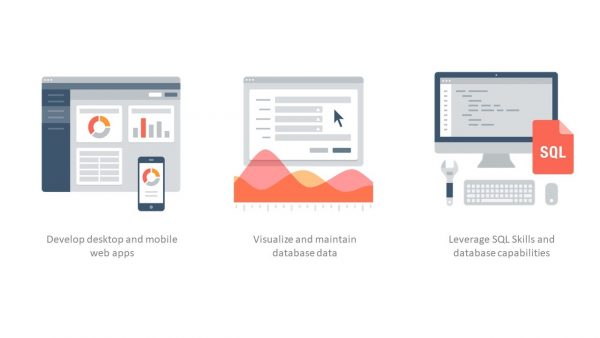It’s tough for companies with Oracle Forms. They are often told they should replace this 30-year-old application development technology. But then, Oracle will tell you that the latest version of Forms will easily integrate with almost any modern technology your enterprise requires.
So where does that leave you? Should you be considering an Oracle Forms Migration?
Oracle Forms – Migration vs Modernization
Although the Oracle statement may seem like a bit of a stretch, it isn’t really. In fact, believe it or not, the coexistence of Forms with the most recent technologies is the least costly, and most effective path into the future for your company’s Forms applications.
Since, in many cases, an Oracle Forms migration means converting hundreds of applications and thousands of screens, you might want to consider the following minimal cost, minimal effort flow towards the future.
Modernize Forms Using your Experience, your Resources, and your Data Model
If you have Oracle Forms, your developers are likely well experienced in Oracle technology (Forms has been around a long time). These developers probably have good PL/SQL skills and aren’t object-oriented. They probably have a good understanding of data modelling, too. This is basically all you need to develop Web applications, Web services and mobile apps at no additional cost, within the same data model. Even better, If you have Oracle Forms, you already have the application development framework that allows you to do this. It’s called Oracle Application Express (APEX). It comes with your Oracle Database at no extra cost, actually.
A Familiar Place
Oracle APEX is a declarative Framework, just like Forms. And, just like Forms, it’s PL/SQL based. Your developers will feel right at home using it. You can’t underestimate this as a motivating factor. APEX is an easy doorway into today’s technologies. I was actually a Forms developer myself and tried both APEX and Java at around the same time. The learning curve with APEX was much faster. The step towards developing web applications much, much easier. And, your developers will be doing this all within your existing data model, plugged into your unchanged database. This represents such a huge time leverage.
Unfamiliar with Oracle APEX? read The Top 5 Questions People Ask About Oracle APEX

Unfamiliar with Oracle APEX? Learn more here.
The Opposite of a Big Bang Approach
Instead of starting from scratch, start from something that already serves your business processes well. Modify only what you need to.Forms is still supported by Oracle and it will continue to be supported (and upgraded) into the foreseeable future (read more about that in this article by Simon Greenwood), so, it isn’t frozen in time.
There’s another thing about ripping out and starting anew. Your Forms applications are likely to be already integrated with your other enterprise technologies. So, in fact, if you go the route of replacement, you aren’t just replacing Forms, you are looking to reverse engineer those integrations as well. That can be a drawn-out and costly process.
Forms and APEX, the Odd Couple
Even if they are very different, Forms and APEX coexist and work together in the same database. This simplifies deployments, upgrades, and maintenance.
Insum approaches Forms modernization with a combination of time-tested methodology and vast project experience. This is because over the years we’ve developed an efficient approach to analyzing the complexity of the Forms install and how to integrate Web and mobile applications, on-line reporting, dashboards and just about any other Webservice you can think of. We can also migrate some components of Forms if deemed necessary. All of this using our expertise in APEX. See our Oracle Forms Modernization services in detail.

That’s me on the corner at GLOC17 🙂 – photo courtesy of my friend Joel Kallman –
See also
Our Oracle Forms Modernization Services
Oracle Forms Conversion to Oracle APEX – Where to Start
How You Know It’s Time To Modernize Your Oracle Forms & Reports App
